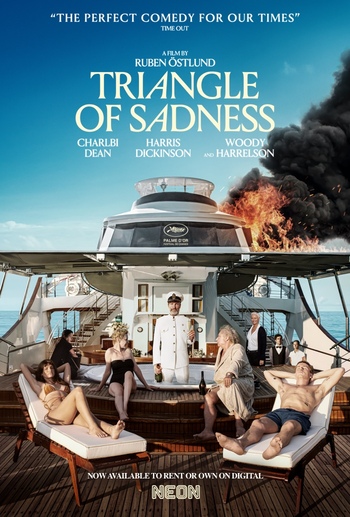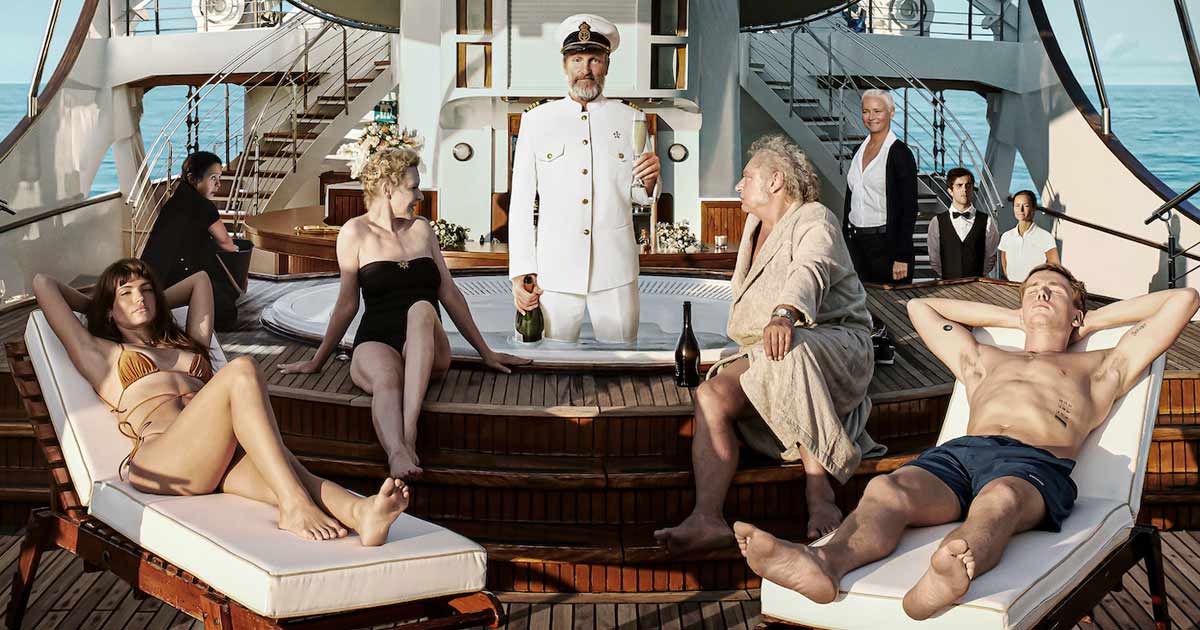The Triangle of Sadness’s opening credits show male models wearing speedos covered in the star-spangled banner as they get doused in paint in a way that is reminiscent of Jackson Pollock’s art. For a while after the credits ended and the movie trudged along, I wondered what it meant. Was it a metaphor for something I missed? No. It’s Ruben Östlund’s way of introducing you to a film that is entirely void of nuance, elevating satire on class and power structures to a whole new level of ridiculousness. There is no metaphor; this is all rich people nonsense.
As many of his fans would know, subtlety is not Östlund cup of tea. Therefore, what sets The Triangle of Sadness apart from the other eat-the-rich media (a genre of film that has become increasingly popular since the onset of the pandemic), is that there is no high-nose snobbery to it. The much-talked about shit-and-vomit fest at the centre of the film is not to every film goers taste. But that is what makes the film special.

The Triangle of Sadness is also elevated by its stupendous cast, especially the breakout performance by Dolly De Leon. I particularly enjoyed watching the late Charlbi Dean and Harris Dickinson’s portrayals of the model-couple, right from their introduction in the first act.
The shipwreck, in part two of the film, is caused by the rich guests – their actions on the boat and the businesses they run outside of it. “I sell shit”, announces a Russian oligarch as the yacht is flooded with sewage. Other media like The White Lotus, Glass Onion, and even Parasite, remark on the power structures of our world, the corruption that comes with any form of power, and the sheer hypocrisy of those who hold it. Yet none demonstrate so effectively that the means people take to earn their fortune, and the ways in which they exert their influence, are what ultimately come back to bite them.
In its last act, The Triangle of Sadness subverts traditional power structures. But the corruption of power remains, leaving you with questions about your own humanity rather than doubts about existing structures and systems of influence.

